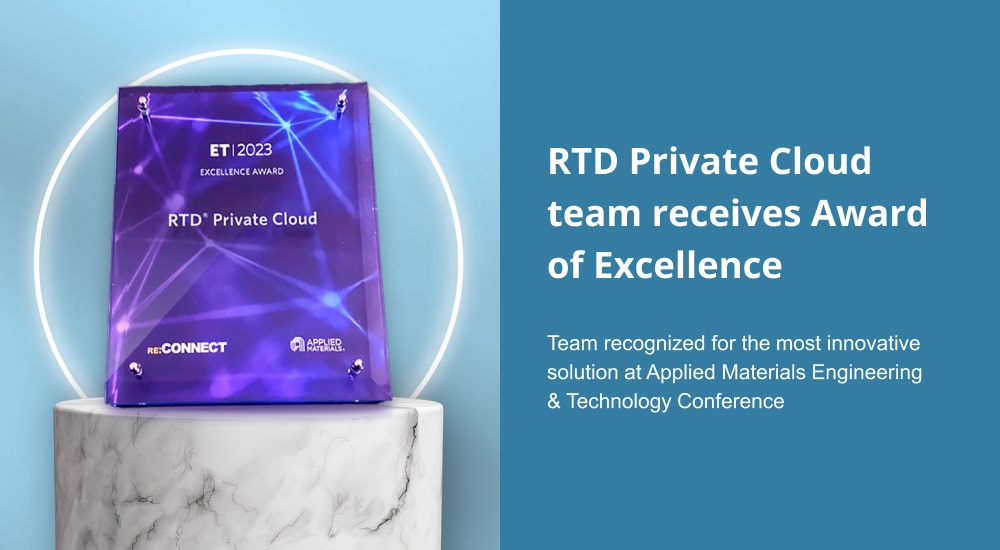Interview
Madhav Kidambi, Technology Director, discusses a new roadmap our SmartFactory Productivity team developed to make it easier for our customers to plan and implement Applied’s APF solutions in a cloud environment.
Madhav: We know the term cloud offering can be interpreted in different ways, so we knew we first had to define what it means in different contexts, ranging from whether an application is cloud-enabled to operating solely in a managed cloud environment.
Based on those definitions, a roadmap then was created for migrating current on-premise offerings to cloud-based offerings. The roadmap, or framework, we developed (see figure 1) defines which applications will be deployed and hosted on a cloud to achieve these objectives. It also addresses the concerns around performance and security for data and applications.
Madhav: Our customers use the roadmap to identify and plan which applications can be hosted in their own data centers, versus which they will host in a cloud service provider’s environment or that provided by SmartFactory (level 4).
Madhav: No, this is a very customized approach in which the customer chooses to host or deploy the solutions at different levels based on their unique performance and data requirements. Typically, the mission critical applications run in level 1 or level 2, as will those essential to protecting intellectual property. These are hosted by the client and may be as much as a particular client needs or wants to deploy at any time.
The applications which are not mission-critical or do not have real-time decision-making requirements run in level 3 or 4 depending on the data security requirements. At level 3, the company utilizes a virtual private cloud where they have a dedicated account. At level four, we provide cloud services for a set of APF solutions, as well as other products and solutions the customer chooses to run at this level. Again, the roadmap is there to help guide the decision as to which solutions they may want to deploy in which type of cloud environment.
Madhav: RTD is the mission critical application, which currently has 90% market share in 300 mm fabs and is the foundation platform key to the rest of the products and solutions in our factory productivity portfolio. It made the most sense then, for it to be the first SmartFactory Productivity offering on the cloud using container-based architecture for mission critical applications. There are also specific pain points around RTD that Private Cloud can address.
For example, on-premise systems present many infrastructure issues for customers including that it can be difficult to apply operating system level and application patches. Upgrading also can be a challenge.
Cost also can be a real pain point. There are high infrastructure costs surrounding RTD because of the number of servers needed to support these systems. It can be hard to justify the significant capital expenditure to purchase new hardware specifically for RTD. This is particularly the case because centralized IT departments want to utilize data centers with shared resources because they are easier to maintain and secure and can be more easily standardized on hardware models.
Additionally, if a RTD is sized inefficiently, there is excessive cost involved as the manufacturer pays for what they don’t use all the time just to make sure they have it available some of the time.
- Optimize hardware usage
- EOL of physical hardware
- A cloud cluster can be made up of less expensive, more commodity hardware
- Using APF Cloud with a larger number of APF applications can reduce the dependency on specialized expensive hardware
- Lower the cost of ownership of maintaining the application
- Leverage large scale parallel computing to make better decisions
Madhav: Because it is Kubernetes based, overall management of the applications is easier. This containerized system allows users to react more flexibly to changing demands and easily move applications between Kubernetes nodes. Managed via the load balanced gateway, applications can be isolated before being transitioned to a new node. There also is an easier horizontal scaling of both dispatching capacity and the ability to provision additional capacity simply by cloning existing production node application. And, the Kubernetes system allows for rapid expansion and contraction of resources with no downtime of RTD during platform changes.
Adding or removing hardware can also be seamlessly handled by Kubernetes—deploying a new instance of a machine has never been so easy!
I think customers will also appreciate that they are still in control; they can choose whether rolling out one or more production node applications will be completely automated or managed via the cloud portal.
Some additional benefits that help manage APF installations efficiently include:
- OS patches handled via Applied container images, or can be manually managed via multi-stage container builds
- Customers will be able to track stable builds (v9.0, v9.8 or v 9.8.0) to adjust to their level of risk
- Additional 3rd party packages can be handled via multistage build and upgrade on demand
- Small incremental changes will become the norm, with the ability at any point to roll back seamlessly.
CONCLUSION


